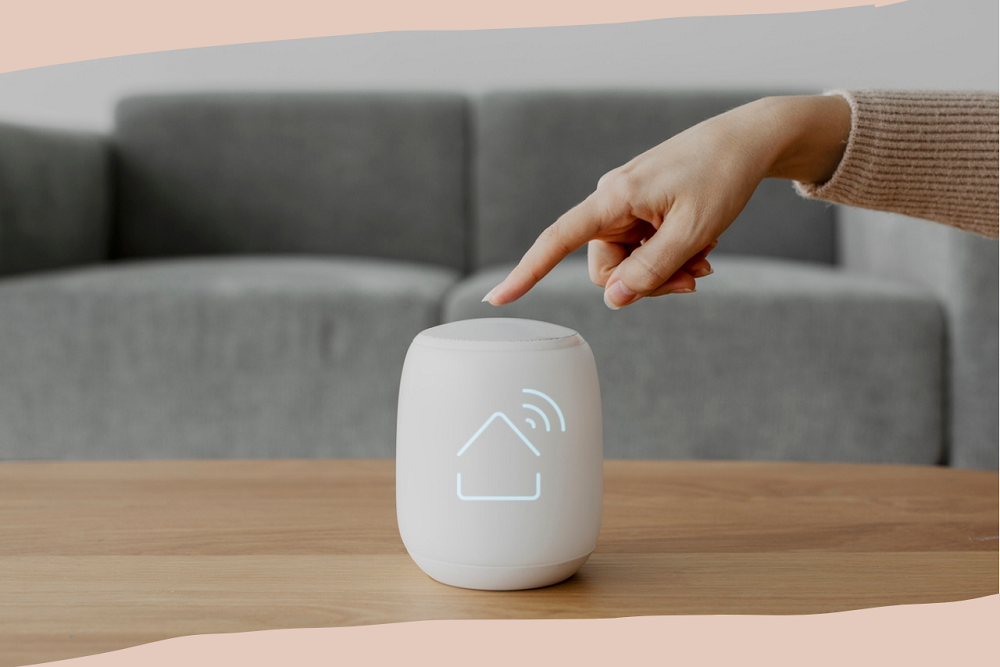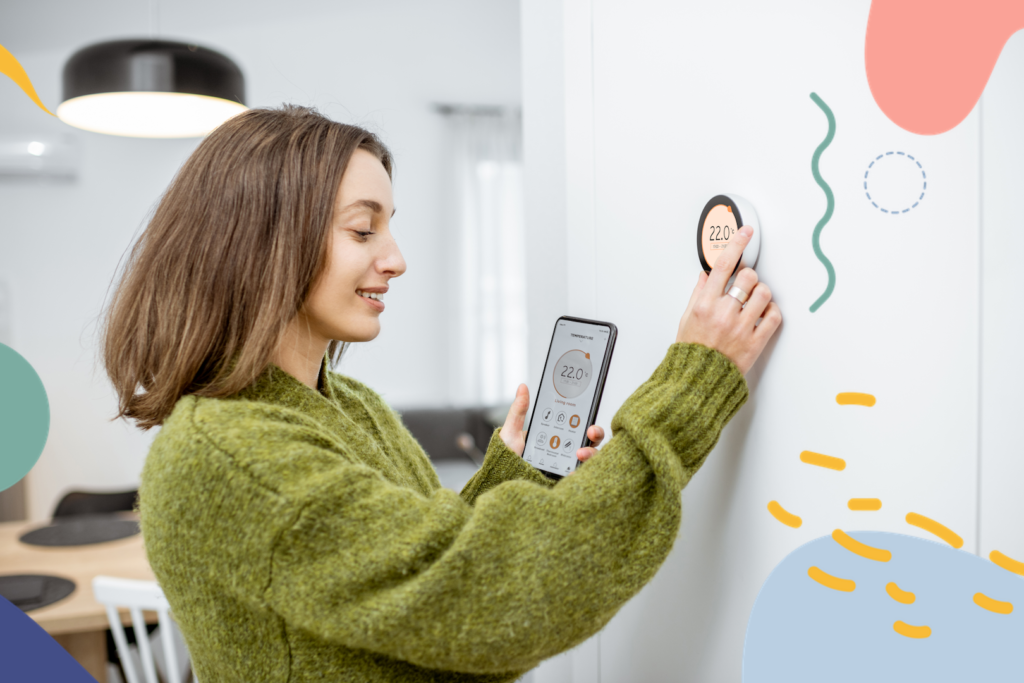Halfway through the 2020s, and the smart home features that once felt like science fiction are starting to look more like an inevitability. The technology is advancing fast, costs are dropping, and what seemed futuristic a few years ago is already cropping up in showrooms and new builds. So what might the fully connected, automated home actually look like by the end of the decade? Here are ten features we expect to become commonplace.
Seamless Integration Of Technology & Design
In 2030, smart home technology will likely be integrated seamlessly into our living spaces. This means that devices such as smart speakers, lighting systems, and security cameras will blend effortlessly with our interior design choices, creating a harmonious and unobtrusive environment.
One real-world example of a company that is currently integrating smart home technology seamlessly into living spaces is Google’s Nest. Nest offers a range of smart home products, including thermostats, cameras, doorbells, and smoke and CO detectors, that can be controlled via a single app. They are also now integrated with AI, though we’re not quite sure how we feel about that.
These products are designed to be aesthetically pleasing and minimalistic, allowing them to blend in with their surroundings and are compatible with a wide range of smart home platforms, such as Google Assistant and Amazon Alexa, enabling homeowners to control their devices with voice commands or through other smart devices.

Voice-Activated Control Systems
Voice assistants like Alexa, Google Assistant, and Siri have already made their way into many homes. By 2030, these voice-activated control systems will be even more advanced, allowing homeowners to manage everything from lighting and temperature to entertainment and security with simple voice commands.
Some future advances expected in the realm of domestic voice-activated control systems include:
- More personalised interactions: Voice assistants are already able to recognise different voices and personalise responses and experiences based on that recognition. In the future, we can expect even more personalised interactions, including the ability to recognise emotions and adjust responses accordingly.
- Integration with more devices: From smart homes to smart cars, voice-activated systems will continue to be integrated with more and more everyday devices. This means that controlling your environment will become even more seamless and intuitive, as you’ll be able to interact with everything around you using just your voice.
- Enhanced language processing: As voice-activated systems become more advanced, they will be able to process more complex language and understand context even better. This will enable more natural and conversational interactions, making voice control feel even more intuitive and effortless.
- Integration with AI: Artificial intelligence (AI) is already being used to improve voice-activated systems, and this trend is only going to continue. As AI becomes more advanced, voice control will become even more intelligent, predictive, and personalised.

Advanced Lighting Solutions
Smart lighting systems will become increasingly sophisticated, offering homeowners the ability to customise their home’s ambiance with precision. This could include colour-changing LED lights, circadian rhythm-based lighting schedules, and even holographic displays for immersive experiences.
The Philips Hue is arguably the leading company in smart automated lighting for the home. They offer a range of products such as smart bulbs, lamps, and lighting fixtures that can be controlled via their mobile app. Their commitment to integration with other smart home devices – you can control their lights using voice commands through Amazon Alexa and Google Assistant – and easy-to-use system set them apart.
Energy-Efficient & Sustainable Design
As concerns about climate change continue to grow, smart homes will prioritise energy efficiency and sustainability. Solar panels, green roofs, and rainwater harvesting systems will become standard features, while smart thermostats and energy management systems will help homeowners optimise their energy usage.
It’s likely that the control and even installation of such devices will be more inclusive, with home features like temperature, lights, and wall plugs all manageable remotely.
Read: 7 purchases that could make your home more energy efficient

Adaptive Glass & Smart Windows
Windows have always been one of the home’s more passive features – they let light in, keep weather out, and that’s about it. By 2030, that’s set to change dramatically. Electrochromic glass, which can switch from transparent to opaque at the touch of a button (or automatically based on sunlight levels), is already being fitted in high-end builds and will likely become far more affordable and widespread.
Beyond tinting, smart windows could double as display screens, showing everything from the weather forecast to video calls, while maintaining transparency when not in use. Some manufacturers are also developing glass that generates solar energy without the need for rooftop panels, turning every window into a power source.
Privacy is another benefit – no more fumbling with blinds when the neighbours peer in. With smart glass, you can frost your bathroom window on demand or schedule your bedroom to go opaque at bedtime. Companies like View and Halio are already leading the charge here, and as production scales up, expect smart glass to become a genuine selling point in property listings by the decade’s end.
Smart Kitchens
In the not-too-distant future, smart kitchens will likely include a range of cutting-edge features that will revolutionise the way we cook and eat at home. One such feature could be smart fridges that utilise advanced AI algorithms to keep track of expiration dates, suggest recipes based on ingredients, and even place online grocery orders.
Smart ovens that can recognise different foods and adjust cooking times and temperatures without human intervention are also likely to become commonplace. Countertops that weigh ingredients, detect spills, and wirelessly charge devices are another possible addition. With the increasing sophistication of virtual assistants, smart kitchens could also be equipped with a voice-activated AI that can guide home chefs through recipes and answer any cooking questions they might have. The potential for innovation in this field is enormous.

Enhanced Security & Privacy
There are multiple benefits to ever-proliferating smart home systems – you can keep watch on your house even when miles away (sounds like a fun holiday!), the systems are sensitive and can easily trace unknown people and objects, and best of all, they can be customised to suit your needs.
In the future, smart security for the home will be more advanced and personalised. Smart cameras will have better image recognition, allowing for more accurate movement detection and alerts, as well as the ability to identify different people and animals.
Advanced AI systems will enable predictive analytics, which would allow homeowners to receive alerts when unusual activity is detected around the home. Integration with other smart home devices, such as smart locks and lighting, will allow for more comprehensive security measures.
Voice-activated assistants will also offer hands-free control over security systems, including the ability to arm and disarm alarms or lock doors remotely. Overall, smart security for the home will be more intuitive, personalised, and integrated, making it easier for homeowners to keep their property and loved ones safe.
Health & Wellness-Focused Design
Our living spaces will be designed with our health and well-being in mind. Air purification systems, ergonomic furniture, and smart sleep technology will be integrated into our homes to promote physical and mental wellness.
Smart home technology could also be employed to encourage physical activity by monitoring and measuring movement and activity levels and providing tailored exercise recommendations, not dissimilar to current innovations in the world of smart home gyms, just supercharged.
Additionally, smart homes could incorporate advanced non-invasive health monitoring (freaky) and diagnostic tools to track vital signs and detect early symptoms of illness, offering a truly holistic approach to health and wellness.

Virtual & Augmented Reality
By 2030, virtual and augmented reality technologies will have matured significantly, allowing for immersive entertainment experiences and virtual interior design tools. Homeowners will be able to ‘try on’ different home decor styles and furniture arrangements before committing to a purchase or renovation.
Read: How artificial intelligence is reshaping interior design
Robotics & Automation
Finally, robotics and automation will play a significant role in the smart homes of 2030. From robotic vacuum cleaners and lawn mowers to automated laundry folding machines, these innovations will streamline household chores and free up more time for leisure and relaxation.
Some robots may be designed to perform highly specialised tasks, such as medical care or assistance for the elderly, while others may simply function as family companions, capable of engaging in conversation and providing entertainment. Hey, they might even replace your spouse…
The Bottom Line
The smart, automated home of 2030 promises to be an exciting blend of cutting-edge technology, sustainable design, and enhanced functionality. As we continue to innovate and push the boundaries of what’s possible, our living spaces will become more efficient, comfortable, and enjoyable than ever before.
Or, alternatively, a home that turns against you and ends up as your nemesis. Just saying…





